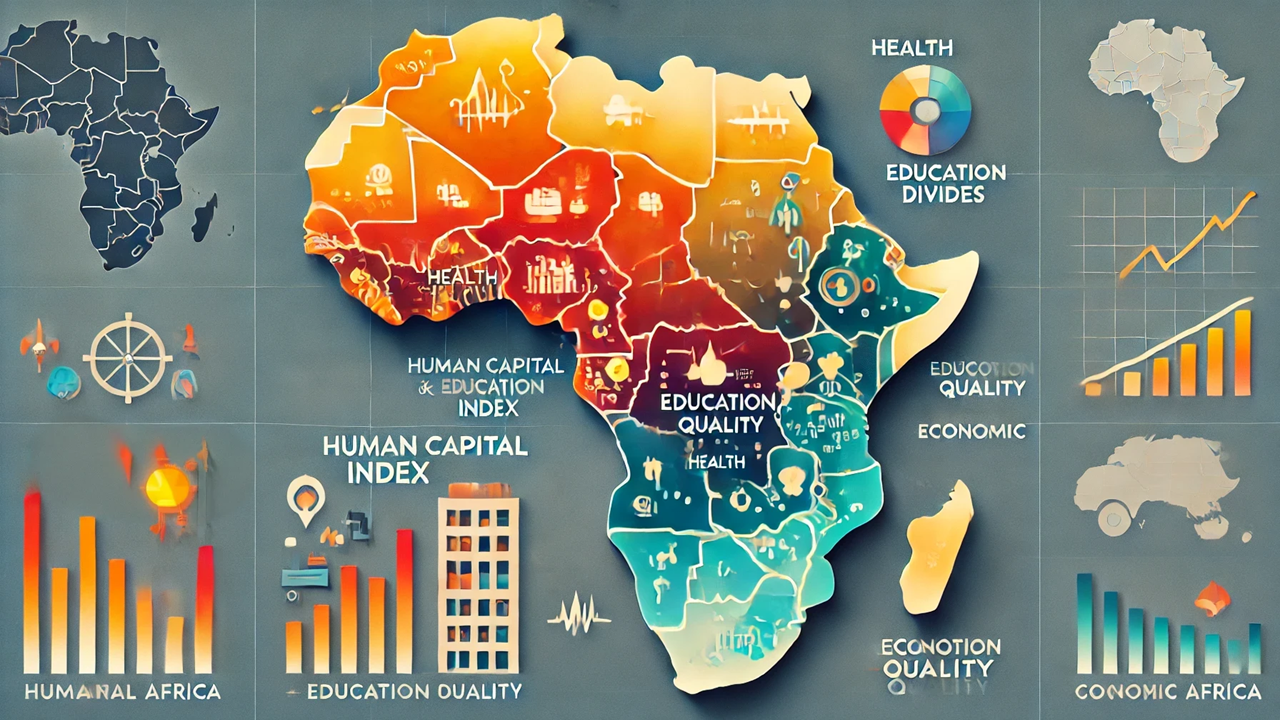Bridging the Gaps: Human Capital Disparities Across the CEMAC Region Highlight Need for Targeted Investments
A World Bank report reveals stark regional inequalities in human capital across the CEMAC region, where targeted health, education, and social investments could significantly close gaps. Addressing disparities, especially in rural and underserved areas, is key to unlocking the potential of millions across Central Africa.

A recent report by the World Bank, "Sub-national Differences in Human Capital in the CEMAC Region," paints a compelling picture of significant inequalities in human capital across Central Africa, encompassing Cameroon, Chad, the Central African Republic, and the Republic of Congo. By examining the Human Capital Index (HCI) across these nations, the report highlights the urgent need for targeted investment in education, healthcare, and social support services to unlock the full potential of the region’s population.
Stark Disparities in Health and Education Across Regions
Within the CEMAC region, the HCI—a measure that evaluates the potential productivity of a population based on its health and education outcomes—varies widely, with scores ranging from as low as 0.27 to 0.46. Such low scores indicate that, across these countries, residents are achieving only a fraction of their potential. However, beneath the national averages lies an even starker reality: substantial inequalities are evident between urban and rural areas, as well as among various regional divisions.
Country-Specific Insights Highlight Key Challenges
The World Bank report delves into specific disparities within each country in the CEMAC region:
Cameroon: Regional differences within Cameroon are pronounced. While the South-West region leads in human capital indicators, the North-West, Adamaoua, and East regions lag significantly. These areas face particular challenges in providing adequate schooling and ensuring child health, a fundamental driver of long-term human capital growth.
Chad: Although Chad exhibits relatively uniform HCI scores across its regions, the levels remain low overall. The capital, N'Djamena, performs the best. Yet, low survival rates for children under five and limited access to years of schooling in central and southern regions highlight critical gaps in health and education.
Central African Republic: In this nation, the capital city of Bangui stands out for its relatively higher HCI, doubling the educational years expected in other regions. However, the report emphasizes that southeastern regions, such as Mbomou, experience the lowest educational attainment, underscoring the disparity in resource allocation across the country.
Republic of Congo: The Republic of Congo displays a wider range of HCI values, with Brazzaville and Pointe-Noire showing relatively higher scores. Yet, rural areas like Likouala and Kouilou fall behind, with health outcomes significantly impacted by stunting and low survival rates to age five, particularly in the Sangha region.
Recommendations for Bridging Regional Inequalities
The World Bank's recommendations underscore a multi-faceted approach to tackling these inequalities. First, prioritizing investment in underserved regions is critical. By directing resources toward areas where human capital indicators are lowest, governments can start to level the playing field for communities that lack essential services.
Furthermore, enhancing access to both health and educational services is paramount. This approach includes expanding social safety nets to enable disadvantaged households to access necessary healthcare and schooling. The report stresses that bridging these gaps will not only improve individual outcomes but will also lead to more inclusive economic growth for the CEMAC region.
Lastly, improved data collection at the regional level is vital. Comprehensive data on learning outcomes and survival rates would provide more accurate insights into the needs of each area. Notably, Equatorial Guinea and Gabon require updated regional data to allow for a thorough assessment of their human capital.
A Call for Equitable Growth
The World Bank's findings emphasize that the key to sustainable development in the CEMAC region lies in addressing these profound disparities in human capital. With strategic investments in education and healthcare, alongside enhanced data-driven planning, governments across Central Africa can foster equitable growth that benefits every citizen. The report, "Sub-national Differences in Human Capital in the CEMAC Region," serves as both a call to action and a blueprint for realizing this vision.
- FIRST PUBLISHED IN:
- Devdiscourse










